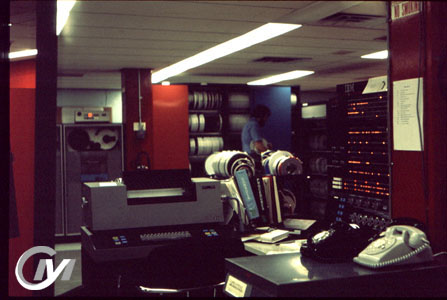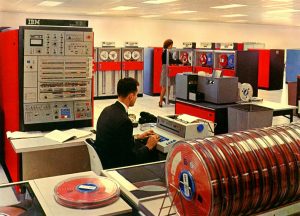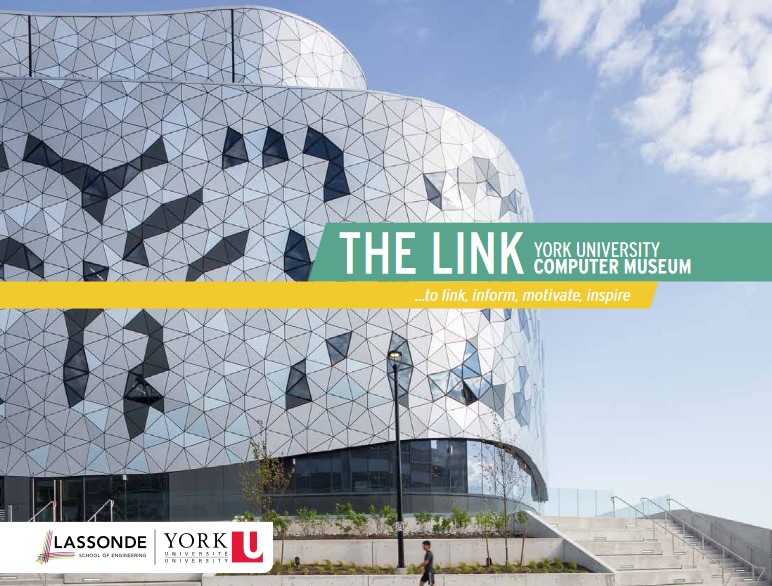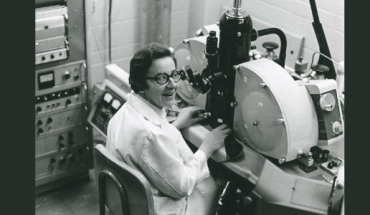BCE (Before the Common Era) is a religiously agnostic dating protocol often cited these days, but the acronym could well stand for Before the Computer Era, if our current cultural preoccupations are any indication.
And the current computer culture can be forgiven if it’s at all surprised to find that, in fact, the computer era stretches back not twenty, not fifty, but one hundred years!
Perhaps even more surprising to some, the computer’s roots are in no small part Canadian.
Way back in 1917 (many centenaries to celebrate, acknowledge if not bemoan this year), a small Toronto firm was making record-keeping machines as part of the Computer Tabulating Recording Company (CTR), soon to be known as International Business Machines, or IBM.
More to the point, what’s seen as the world’s first microprocessor-powered personal computer was built here: demonstrated in 1973 and hitting the market in 1974 was the evocatively named MCM/70; it’s big brother, the minicomputer with rows of lights and switches on its front panel, was no match for portability, ease of operation, price and personal focus of the MCM computer.
The text-based operating system used to control the machine – designed as an extension of the APL programming language invented by Canadian Ken Iverson – was also developed in this country, more than a decade before MS-DOS. The machine’s systems software was a made-in-Canada product, based on a dialect of APL called York APL for the then-nascent computing centre at York University.

YUCoM, the York University Computer Museum, may well hold the largest single collection of Canadian computer hardware, software, documents and other items of techno-significance.
Many years later, it is at York where this tech history is being maintained and where the evidence will be exhibited, as exciting developments at the York University Computer Museum come to fruition over the next year or so.
Tech community partners are already coming together to expand the physical and virtual showcase of Canadian contributions to computing and information technologies, and to create a world-class permanent computing and information technology exhibition.
Already holding what’s possibly the largest single collection of Canadian computer hardware, software, documents and other items of historical significance, the facility plans to add exhibits, deliver educational programming and tell stories about Canadian scientists and technology pioneers.
Along with its showcase of Canada’s computing heritage, the new exhibition will also present corporate profiles of sponsoring companies and organizations as well as their legacy and current products, organizers describe.

Zbigniew Stachniak, Associate Professor Department of Computer Science and Engineering, York University.
Zbigniew Stachniak is Associate Professor Department of Computer Science and Engineering at York; he’s the author of a book about the life and death of the MCM/70, and he’s enthusiastic about growing the Computer Museum at York (it’s been open since 2002 in one form or another) with next year’s opening of THE LINK.
“So far, we have secured support and endorsements from several large high-tech companies, organizations, and high-profile computer pioneers,” he described.
“The exhibition is being designed by a world-renowned architectural firm [and] content is being created internally at the Museum. Preliminary designs already offer very innovative solutions for the creation of a unique high-tech exhibition space.”
Several companies, including AMD, Matrox and IBM, are contributing artifacts for the exhibition, he added, which is set to open in 2018.
Also planned for next year is the launch of a dedicated exhibit called IBM@York, marking the long relationship between the high-tech company and the educational institution.

IBM Canada has opened up the image archives, and shared hundreds of thousands of images from our computing history with York University.
Stachniak enthusiastically describes how the Museum now has access to (mostly Canadian) archival material provided to York by IBM Canada, including well over 100,000 photographs, negatives and slides.
“This material is truly a remarkable resource. Some of these photographs date back to the beginning of IBM Canada, which is 1917. Many of them are of a unique artistic value and we decided to use them for our exhibit. We are currently in the process of converting these photographs into large formats to be shown at the exhibit.”
Stachniak’s efforts at the Museum, his writings about tech history and the upcoming developments at York are all seen as a valuable link between our technological heritage and the present-day digital world.
“We are almost completely defined by past events and only partially by our plans, dreams and expectations,” says Stachniak when asked about the importance of preserving history (and perhaps not just technological history).
“Therefore the role of museums, including tech museums, is to maintain these definitions of who we are, to understand the principles of our creativity. Furthermore, inventions never happen outside of historical contexts and frequently are the result of a long chain of events that started long ago.
“Our museum is dedicated to the history of computing in Canada. Through our exhibits and outreach programs we would like to inspire future generations of researchers and engineers to follow in the footsteps of Canadian pioneers of computing.”
The York University Computer Museum (YUCoM) is located in the Lassonde School of Engineering at York, a school with its own unique history and mandate: created to be the home of the Renaissance Engineer, students are encouraged to explore their passions and gain different perspectives from the world around them – museums included.

THE LINK is described as a free access, interactive, and permanent computing and information technology exhibition. It seeks to inform, educate and inspire future engineers and scientists to follow in the footsteps of the Canadian scientists and technology pioneers.
-30-




Can’t get enough old technology?
Personal computers and video game consoles of the 1970s, ’80s and ’90s will be featured as part of events planned for the Kitchener/Waterloo region early next year.
THEMUSEUM there is partnering with the Personal Computer Museum to present InterPlay, an exhibition of functioning vintage machines designed to trigger thumb-flexing interactive play and heart-tingling techno-nostalgia.
InterPlay will also act as a precursor to Digital Dynamics 2018, a New Media Festival that’s being staged in the Waterloo Region.
Digital Dynamics 2018 launches January 25, 2018 with the opening of the festival’s anchor exhibition, InterAction. and a number of unique installation pieces mashing up technology and the arts. They’ll be on display until May 13, 2018.
A handful of satellite events will also be developed as a part of Digital Dynamics 2018. One of these satellite exhibitions is Games of the Future, developed in partnership with Montreal’s Technoculture, Art and Games (TAG) and the Games Institute at the University of Waterloo.
The Personal Computer Museum, located in Brantford, ON, was first written up here at WhatsYourTech.ca back in 2014.